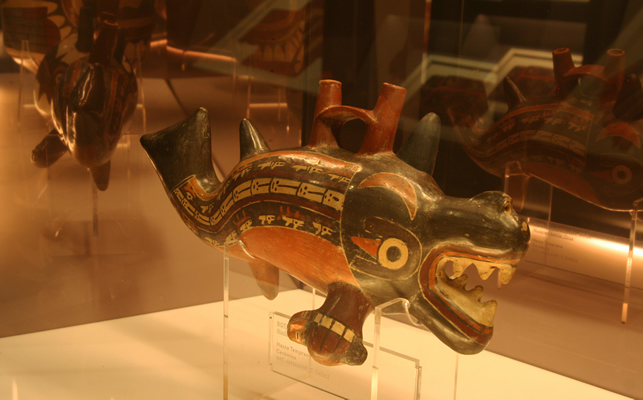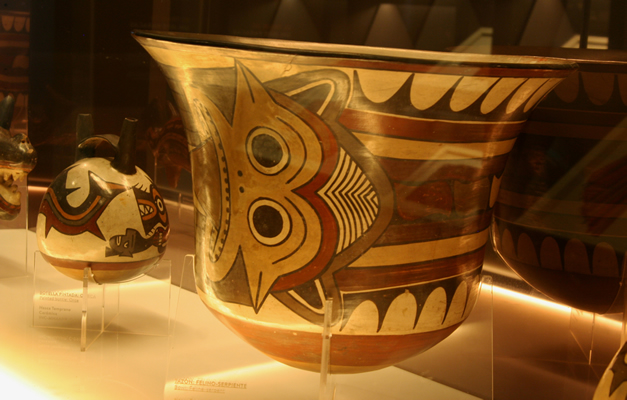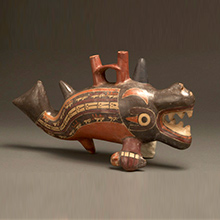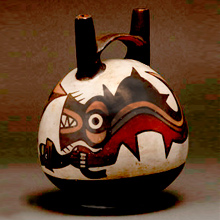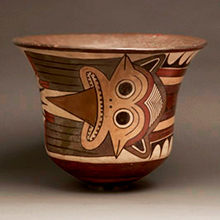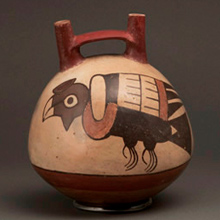Paracas Funerary Mantles: Offerings for Life – 2015
- Paracas funerary mantles: Offerings for Life
- Who Were The Paracas?
- The Wari Kayán Cemetery and Its discoverer
- What is a funerary bundle?
- Offerings for the Afterlife
- “Reading” the Images
- Severed heads, trophy heads
- Paracas textile art
- Three styles of embroidery
- A miniature outfit
- Headband: Turban I
- Headband: Turban II
- Headband: Turban III
- Turban-cloth: Two-headed serpents
- Skirt: Big-Eyed Being
- Uncu tunic with felines: Big-eyed Being
- Short poncho: Orcas
- Short poncho: Feline-Man
- Short poncho with fringes: Big-Eyed Being
- Attire of a Paracas chief
- Opening a funerary bundle from the Wari Kayán Necrópolis
- Mantles for the afterfile
- Bibliographic references
- Credits
“Reading” the Images
There are two ways of “reading” the images represented on the Paracas textiles. One way is to attempt to identify different representations of the same figure based on the human and/or animal traits they display, according to the attire they wear and/or the objects they carry. Using this approach, one can identify the Mythical Anthropomorphic Being, the Big-Eyed Being and the Shaman in Flight, as well as other figures associated with the sea or with agriculture. The other way is to observe the richly dressed figures found on ceramic vessels of the Early Nasca tradition, which are contemporary to the Paracas Necrópolis textiles, to discover how the grave goods found with the funerary bundles were used.
As individuals were buried with the same objects associated with mythical figures, the Paracas people may have believed that those deceased persons were transformed into mythical ancestors, with the objects serving as symbols and emblems of their new status.






































